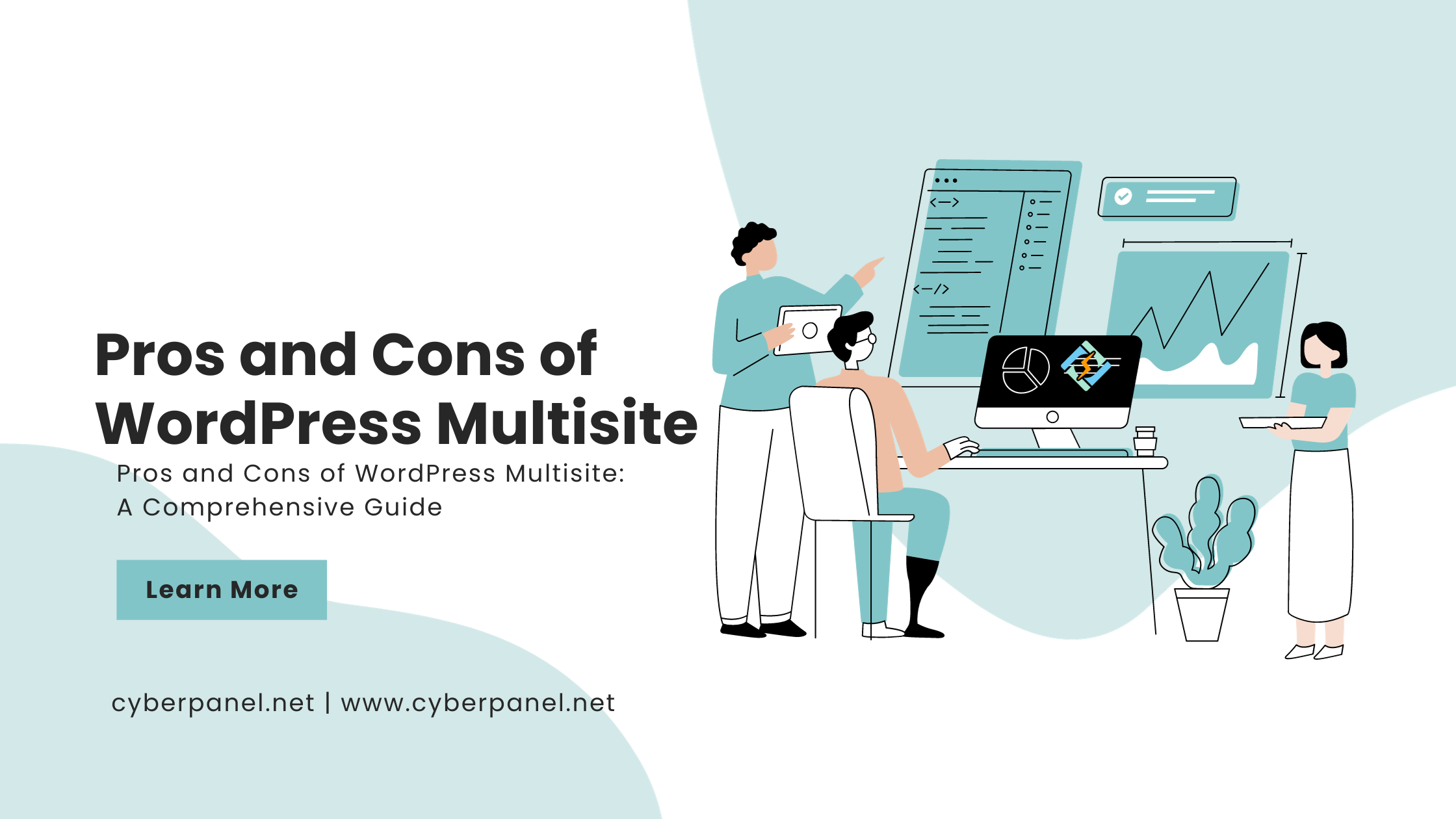
WordPress Multisite is a powerful feature within the WordPress ecosystem that allows users to manage multiple WordPress websites from a single installation. While it offers numerous advantages for certain scenarios, it also comes with its set of challenges hence there are both pros and cons of WordPress Multisite. In this comprehensive guide, we’ll delve into the pros and cons of WordPress Multisite to help you make an informed decision about whether it’s the right solution for your needs.
Pros and Cons of WordPress Multisite
Below are the pros of WordPress Multisite.
| Pros of WordPress Multisite | Description | Advantages |
|---|---|---|
| Centralized Management | With WordPress Multisite, manage multiple websites from a single dashboard, streamlining updates, installations, and overall site management. | Saves time and effort by providing a centralized hub for overseeing multiple sites, especially beneficial for network administrators and agencies managing client websites. |
| Cost Efficiency | Managing multiple sites on a single installation can reduce hosting costs compared to hosting each site separately. | Cost-effective for organizations or businesses managing a network of websites, as it minimizes the expenses associated with individual hosting plans. |
| Shared Resources | Themes, plugins, and updates can be shared across all sites, ensuring consistency and reducing the workload for site administrators. | Streamlines maintenance, ensures uniformity, and simplifies the deployment of updates across the network. |
| Scalability | WordPress Multisite is highly scalable, making it easy to add new sites as your network expands. | Ideal for businesses, educational institutions, or large organizations with a growing number of websites, as it provides a scalable solution without the need for separate installations. |
| User Management | Centralized user management allows administrators to control user access across all sites within the network. | Simplifies user administration, making it easier to grant or restrict access to specific sites for different users. |
Now let’s see the cons of WordPress Multisite.
| Cons of WordPress Multisite | Description | Challenges |
|---|---|---|
| Plugin and Theme Compatibility | Not all plugins and themes are compatible with Multisite, and some may need modifications to function correctly. | Limited plugin and theme options may require additional development efforts or the search for alternatives compatible with Multisite. |
| Complexity for Beginners | The setup and management of a Multisite network can be complex for beginners, requiring a good understanding of WordPress architecture. | Steeper learning curve may pose challenges for users unfamiliar with advanced WordPress configurations. |
| Server Resources | High traffic on one site can potentially affect the performance of other sites within the network. | Resource allocation and server optimization become critical to ensure consistent performance across all sites. |
| Limited Hosting Options | Some hosting providers may not fully support WordPress Multisite, limiting your choice of hosting services. | Requires careful consideration of hosting providers and their compatibility with Multisite features. |
| Data Security Concerns | Security vulnerabilities on one site may affect the entire network. | Requires robust security measures and vigilant monitoring to address potential security risks and protect the entire network. |
Understanding the Dynamics of WordPress Multisite
To unravel the workings of WordPress Multisite, one must grasp the roles played by the network admin and site admin within this versatile framework.
Network Admin Roles on Multisite
Super Admin (Network Admin)
The super admin, often referred to as the network admin, stands as the overseer of an entire network of websites. This admin holds the pivotal role of activating Multisite initially. With access to Network Admin settings and the dashboard of every website in the network, the super admin wields significant control.
Key responsibilities include permitting users to create new accounts or websites, managing plugin and theme installations network-wide, and overseeing uploads for all sites. Super admins also have the authority to map custom domains, adding an extra layer of customization to the network.
Get exclusive access to all things tech-savvy, and be the first to receive
the latest updates directly in your inbox.
Site Admin
In contrast, a site admin typically holds administrative access limited to a single website within the WordPress Multisite network. The extent of their authority is contingent on permissions granted by the super admin. Site admins can add users to the websites they administer, though their scope doesn’t extend beyond their designated site.
While site admins cannot install plugins or themes, they retain control over activation and deactivation. This balance ensures that individual site administrators have a degree of autonomy within the overarching network structure.
Deciding When to Embrace WordPress Multisite (and When Not to)
While WordPress Multisite stands as a commendable strategy in certain scenarios, it may not universally fit every use case. Choosing when to adopt Multisite or opt for individual WordPress sites hinges on several considerations.
When to Use WordPress Multisite
- Similar Content and Functionality: Multisite is ideal for managing websites with akin content, sharing the same core files, plugins, and themes.
- Shared Server Configurations: If websites on the network share server configurations, Multisite streamlines management.
- Localized Websites: For projects necessitating localized websites, Multisite offers an efficient solution.
- Organizational Departments or Projects: Businesses or organizations with separate websites for distinct departments or projects benefit from the centralized control of Multisite.
- Networks of Personal Sites: Personal sites such as digital portfolios, online resumes, or blogs that share content and plugins find a suitable home within a Multisite network.
When Not to Use WordPress Multisite
- Vastly Different Content: If the websites under consideration have markedly different content, Multisite might be restrictive.
- Individually Unique Plugins or Functionality: For projects requiring unique plugins, functionality, and features, individual WordPress sites are more suitable.
- Diverse Server Configurations: Websites with distinct server configurations may face challenges within the uniform structure of a Multisite network.
- Single-Language Websites: Multisite is not the best fit for managing websites that cater to a single language.
- Single Website Requirement: For businesses or organizations that only require a single website, the simplicity of a standalone WordPress site is often more suitable.
Key Features for WordPress Multisite
By employing WordPress Multisite, you gain access to a multitude of features:
- Single Installation with Multiple Sites
I. WordPress Multisite involves a solitary installation accommodating numerous sites.
II. You can establish multiple websites under a single URL, all powered by the same theme and plugins, and share a unified hosting plan. The domain names of the subsites are delineated within the specified URL.
- Singular Installation Requirement
I. Only one installation of WordPress is necessary for the main site when utilizing Multisite.
II. This singular installation suffices to host an unlimited number of sites as needed.
- Diverse Access Levels for Easy Management
I. Multisite provides distinct access levels for simplified management.
II. Each site possesses its own administrator, while the main site boasts a “super administrator” with access to all subsite content. Subsite administrators maintain independence from other network sites and the hosting URL. Additionally, a “network administrator” governs content across the entire network, accessible only to the super administrator or those expressly authorized.

- Shared Themes and Plugins
I. Themes and plugins can be effortlessly shared across the main site and subsites simultaneously.
II. Multisite facilitates the exchange of themes and plugins among all network sites, streamlining the process. Site administrators or the network administrator can readily add and share plugins.
- Cost-Effective Solution
I. WordPress Multisite not only proves convenient but also cost-effective, particularly for businesses experiencing international traffic.
II. The ability to manage hundreds or thousands of sites with a single hosting account contributes to its cost-effectiveness.
- Shared Code and User Base
I. Code and configurations for sites are pooled in WordPress Multisite, eliminating the need for developers to code each site individually during upgrades or network-wide changes.
II. Similarly, the user base is shared, allowing the login and password for one site’s account to be applicable across all sites in the network.
- Efficient Updates
I. WordPress Multisite undergoes regular updates, ensuring a streamlined process.
II. Critical upgrades can be initially applied to the main site before being systematically rolled out to all subsites. This approach relieves website developers from the arduous task of individually installing upgrades across numerous subdomains.
How Can You Create Multisite In WordPress?
You can use CyberPanel + Cloudflare to create WordPress Multisite, we will first add a wild-card DNS record in Cloudflare and we will then deploy WordPress Multisite using CyberPanel
Step 1: Configure Wild-card records in Cloudflare
Go to CloudFlare and select your domain
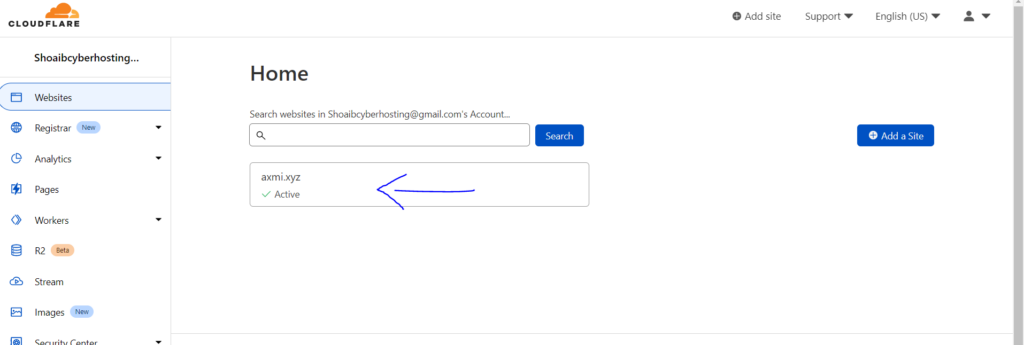
Click on DNS from the left-hand side menu

Enter A record with (*) in name space

Step 2: Deploy WordPress Site
You first need to deploy a normal WordPress site using CyberPanel, once that is done, you can then create child domains that will point to the document root of this main site and then you can add them to your WordPress network.
Go to the CyberPanel dashboard

Click on WordPress -> Deploy WordPress from the left hand side menu

Enter required info
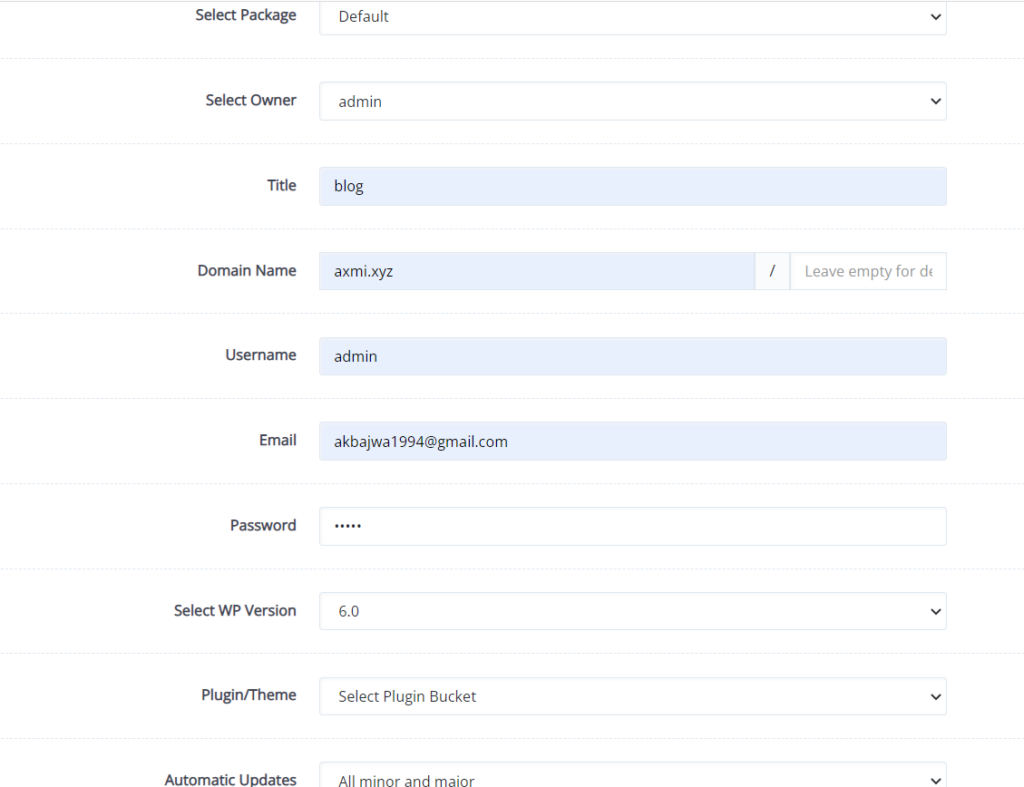
Click on “Create Website”

Step 3: Configure WordPress Multisite
Go to your WordPress dashboard and deactivate all active plugins, on CyberPanel default installation there is only one active plugin called “LiteSpeed Cache” Disable the plugin so that we can configure WordPress Multisite.

Configure wp-config.php to allow WordPress Multisite
Go to CyberPanel dashboard
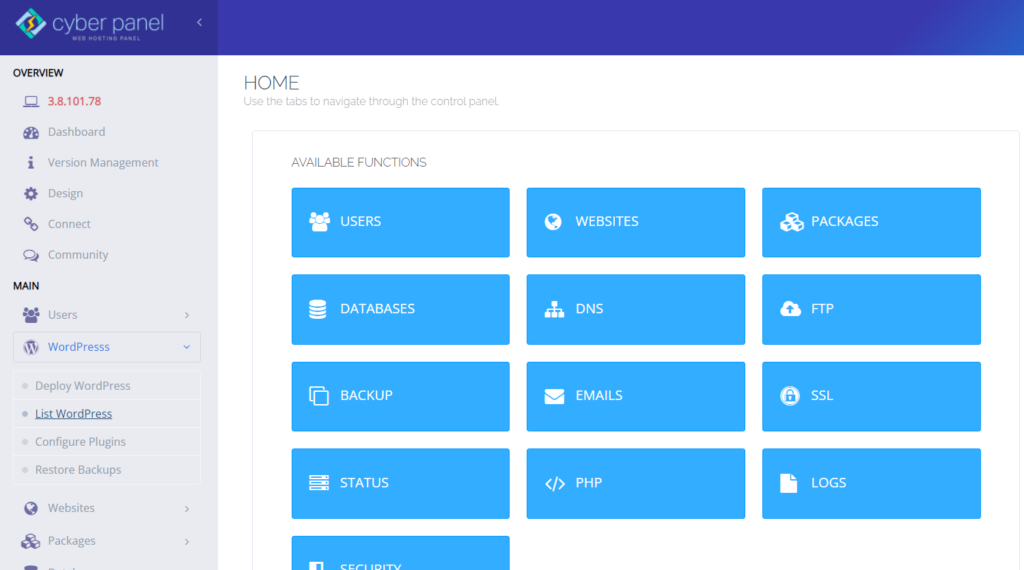
Click on Websites -> List Websites from the left hand side menu

Click on File Manager of your site.

Open public_html

Enter the following code in wp_config.php
define('WP_ALLOW_MULTISITE',true);and click save

Configure Multisite inside WordPress
Open your WordPress dashboard
Click on Tools -> Network setup from the left hand side menu

Select the required options and save. You can select sub-domains or sub-directories

Configuration
After installation, you will be given two pieces of code. In your File Manager in CyberPanel, copy the code and paste them into wp-config.php and .htaccess respectively.


Create new sites on network
you will need to login to WP dashboard again

Go to WP dashboard
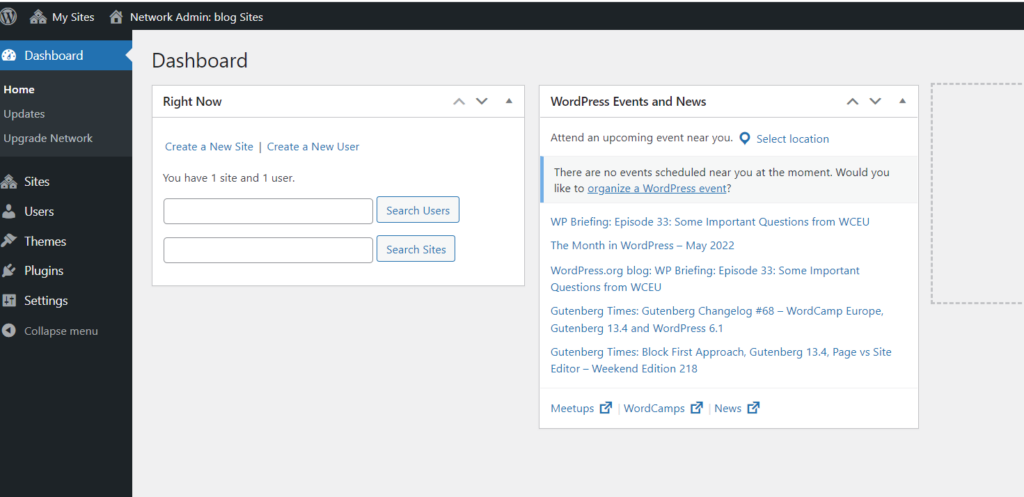
Click on “my sites” from the top. Click on network admin -> dashboard

Click on sites -> add new from the left hand side menu

Enter the required information


Create Child domains
Once WordPress is deployed
Go to CyberPanel dashboard

Click on WordPress -> List WordPress from the left hand side menu

Click on WP site

Click on manage
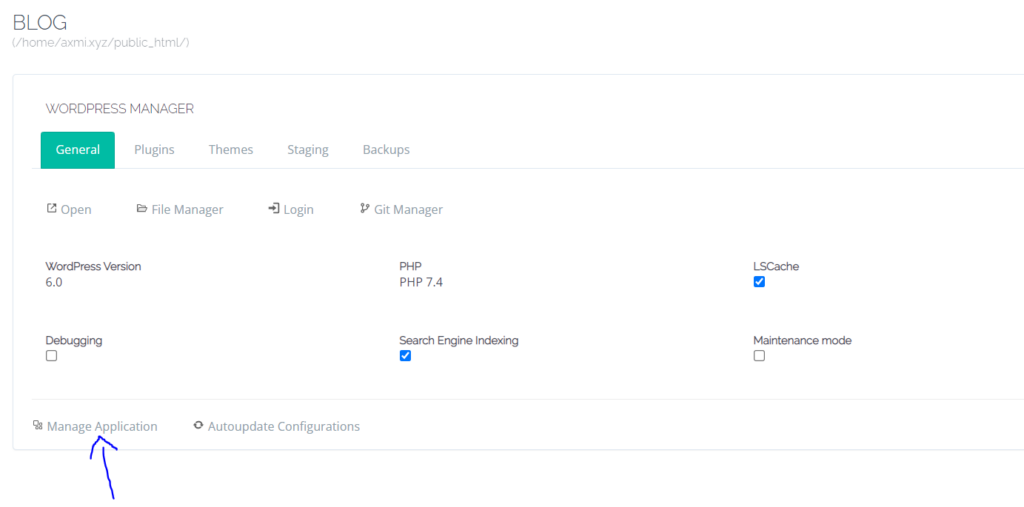
Click on “Add Domain”

Enter required info (make sure to enter “public_html” in path)

Your child domain has been created.
FAQs
What are the key advantages of using WordPress Multisite?
The main advantages include centralized management, cost efficiency through shared resources, scalability for growing networks, simplified user management, and the ability to share themes and plugins across multiple sites.
How does centralized management work in WordPress Multisite?
Centralized management is facilitated by the super admin (network admin), who controls the entire network of websites. This admin can streamline updates, installations, and overall site management from a single dashboard.
Is WordPress Multisite cost-effective?
Yes, WordPress Multisite is cost-effective as it allows for the management of multiple sites with a single hosting account. This is particularly beneficial for businesses with international traffic or organizations running multiple interconnected websites.
Are there any limitations or challenges associated with WordPress Multisite?
Yes, there are challenges to consider, such as limited plugin and theme compatibility, potential complexity for beginners during setup, considerations for server resources and hosting options, and security concerns that may arise due to the interconnected nature of the network.
When is it recommended to use WordPress Multisite?
WordPress Multisite is recommended for websites with similar content, shared functionality, server configurations, localized websites, businesses or organizations with separate departments or projects, and networks of personal sites that share content and plugins.
Conclusion
Throughout this article, we have delved into the intricacies of WordPress Multisite, offering a comprehensive examination of its advantages and drawbacks, and elucidating the user profiles and website scenarios that stand to gain the most from its utilization.
In summation, our recommendation leans toward individuals managing multiple websites with analogous content and functionalities, where the centralized control and streamlined management provided by Multisite prove most advantageous. Furthermore, recognizing the practical needs of our readers, we have supplemented this exploration with a step-by-step guide, elucidating the process of setting up WordPress Multisite on both subdirectories and subdomains.
Whether you are navigating the decision-making process or seeking a practical guide for implementation, we trust that this article has equipped you with the insights and tools needed to make informed choices and embark on a successful journey with WordPress Multisite.
